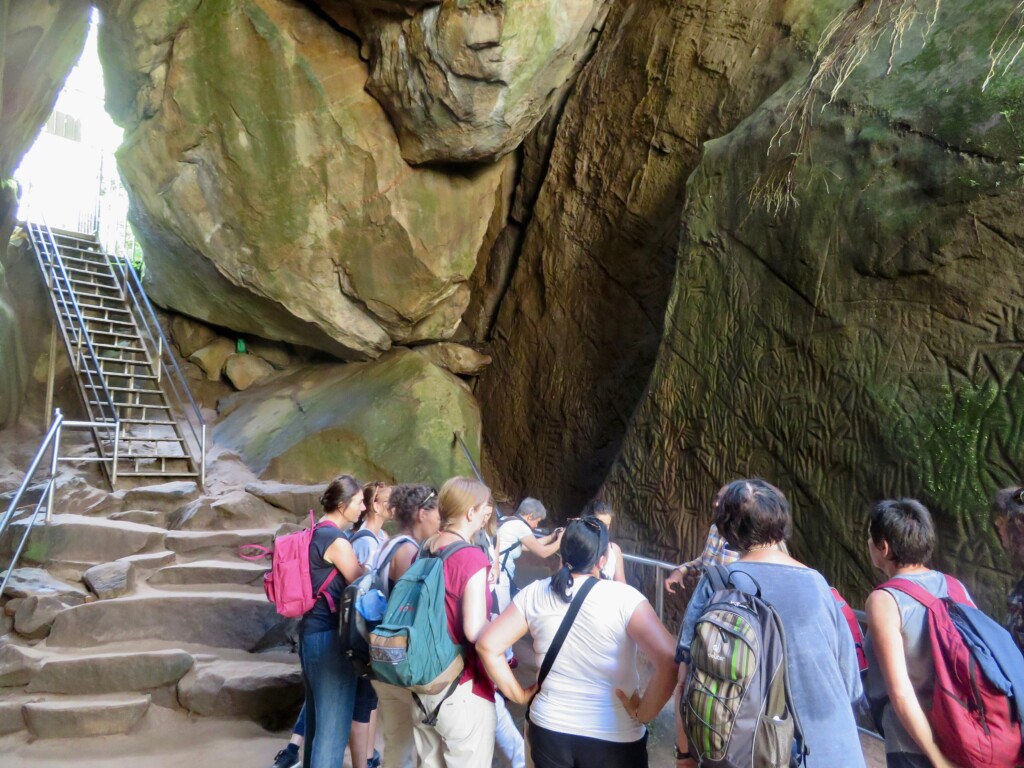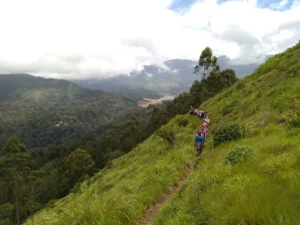Stretching like a verdant spine down the western edge of peninsular India, the Western Ghats are more than just a mountain range—they are a 1,600 km-long cradle of biodiversity, history, and tradition. A UNESCO World Heritage Site, the Ghats span six states and harbour some of the most ecologically rich and culturally layered landscapes on the subcontinent.
Whether you’re a wildlife enthusiast, a cultural explorer, or an adventure-seeker, the Ghats offer a journey like no other. Let’s dive into what makes this region so exceptional.
Flora and Fauna: A Biodiversity Hotspot
The Western Ghats are one of the eight “hottest hotspots” of biodiversity in the world. With ecosystems ranging from tropical rainforests and dry deciduous woods to shola-grassland mosaics and montane forests, the Ghats are a haven for countless species—many found nowhere else on Earth.
From our previous explorations, here are a few remarkable highlights:
- Valparai is home to the endangered Lion-tailed Macaque, seen in the wet evergreen forests surrounding tea plantations. The rare Great Hornbill and Nilgiri Langur also call these hills home.
- In Periyar, dense forests and tranquil lakes support populations of Asian Elephants, Gaur, Nilgiri Langurs, and elusive predators like the Tiger and Leopard.
- Chinnar Wildlife Sanctuary, lying in a rain-shadow region, shelters the Grizzled Giant Squirrel and features drier scrub forests.
- Mudumalai and Bandipur reserves are rich with large mammal sightings, including Sloth Bear, Wild Dogs (Dhole), and a variety of deer and bird species.
- The higher reaches of Munnar and the Nilgiris hold montane cloud forests, home to the endemic Nilgiri Tahr, Nilgiri Pipit, and Black-and-orange Flycatcher.
- The birding potential is equally rich, with hotspots like Thattekkad in Kerala boasting species such as the Sri Lanka Frogmouth, White-bellied Treepie, and various owls and hornbills.
Communities and Tribes of the Ghats
Beyond its forests and animals, the Western Ghats are home to several indigenous communities who have lived in harmony with nature for centuries. Among them:
- The Kurumba, Irula, and Toda tribes in the Nilgiris retain unique customs and architectural styles, with the Toda barrel-vaulted huts being especially iconic.
- In Wayanad, the Paniya and Kurichiya tribes are known for their traditional agriculture and deep ecological knowledge.
- The Muthuvar community in the Chinnar and Marayur regions continues to live close to nature, often guiding conservation efforts.
These communities not only sustain traditional knowledge systems but also play a critical role in the region’s conservation ethos.
Ancient Human Settlements

The Western Ghats have witnessed human presence for thousands of years. Rock engravings, megalithic burial sites, and Neolithic tools have been unearthed in several areas:
- Edakkal Caves in Wayanad contain prehistoric petroglyphs that date back over 6,000 years.
- The Chinnar region hosts dolmens and stone alignments, silent testaments to ancient life in these hills.
- Around Ooty, archaeological remnants reveal the presence of early agriculturists and forest dwellers.
These findings link the Ghats to some of the earliest human settlements in South India, underscoring the region’s historical significance.
Weather and Seasons
The Western Ghats enjoy a mix of tropical and subtropical climates. The monsoon season (June to September) drenches the windward slopes in rain, turning the hills into a lush green haven. Post-monsoon (October to February) offers the best time to visit—cool, clear, and perfect for wildlife viewing, trekking, or cycling.
Summer (March to May) can be hot in the lower elevations, but the higher reaches like Munnar, Ooty, and Coorg remain pleasant year-round.
Tourism and Popular Destinations
From mist-covered hill stations to wildlife-rich forests and spice plantations, here are some of the most beloved destinations across the Ghats:
- Ooty (Nilgiris, Tamil Nadu): Known as the “Queen of Hill Stations,” Ooty features rolling tea gardens, botanical gardens, and cool weather. Look out for Toda heritage and montane species like the Nilgiri Flycatcher.
- Munnar (Kerala): A picturesque highland blanketed in tea estates and cloud forests, Munnar is home to the Eravikulam National Park, famed for the Nilgiri Tahr and blooming Neelakurinji flowers.
- Coorg (Karnataka): A coffee country gem wrapped in rainforest, Coorg is a hotspot for birds, waterfalls, and Kodava culture. The Pushpagiri Wildlife Sanctuary offers great trekking and wildlife sightings.
- Goa: While famous for its beaches, Goa’s hinterlands—especially the Bhagwan Mahavir Sanctuary—offer rewarding wildlife experiences with species like Indian Gaur, Malabar Trogon, and more.
- Valparai (Tamil Nadu): Nestled deep in the Anamalai Hills, Valparai is a quiet, lesser-known destination where tea gardens meet dense rainforest. It’s one of the best places to see the Lion-tailed Macaque.
- Periyar (Kerala): This famed tiger reserve around Thekkady is known for its boat safaris, scenic trails, and abundant wildlife, including elephants, bison, and hundreds of bird species.
- Wayanad (Kerala): With a mix of tribal heritage, prehistoric caves, and rich forest patches, Wayanad is a cultural and ecological treasure trove.
Planning to Travel and Explore the Ghats?
Whether you’re cycling through wildlife corridors, hiking to ancient cave sites, sipping tea in a misty plantation, or listening to owls call at night, the Western Ghats offer experiences that are both grounded and awe-inspiring.
So, pack your gear, pick your trail—be it Munnar’s sholas, Valparai’s forest roads, or Wayanad’s winding backroads—and get ready to experience one of India’s most soulful landscapes.


